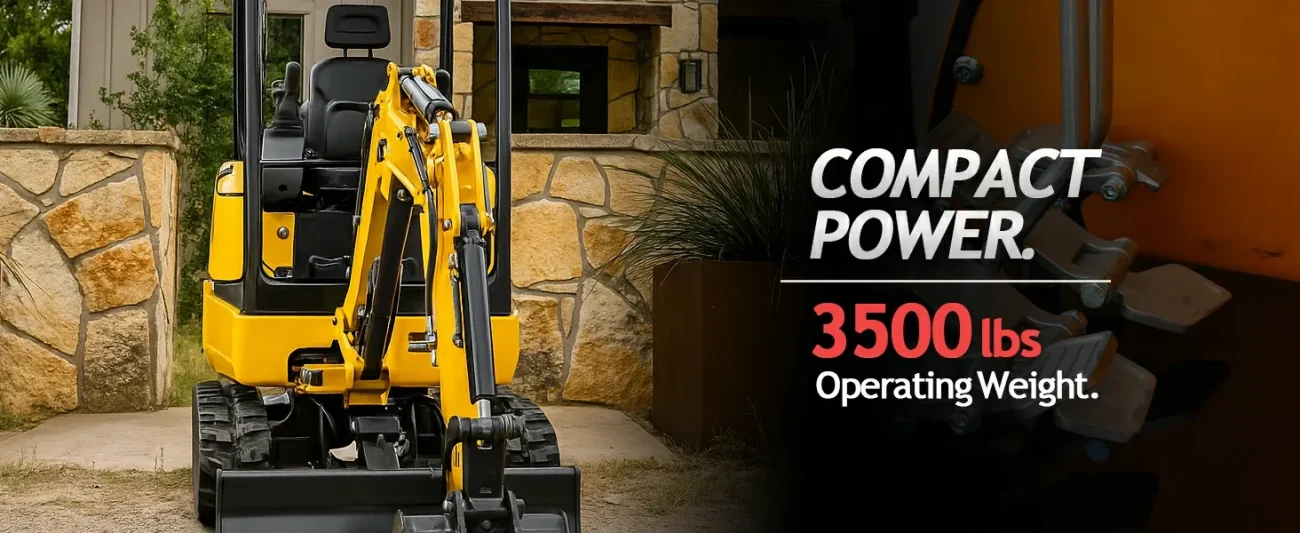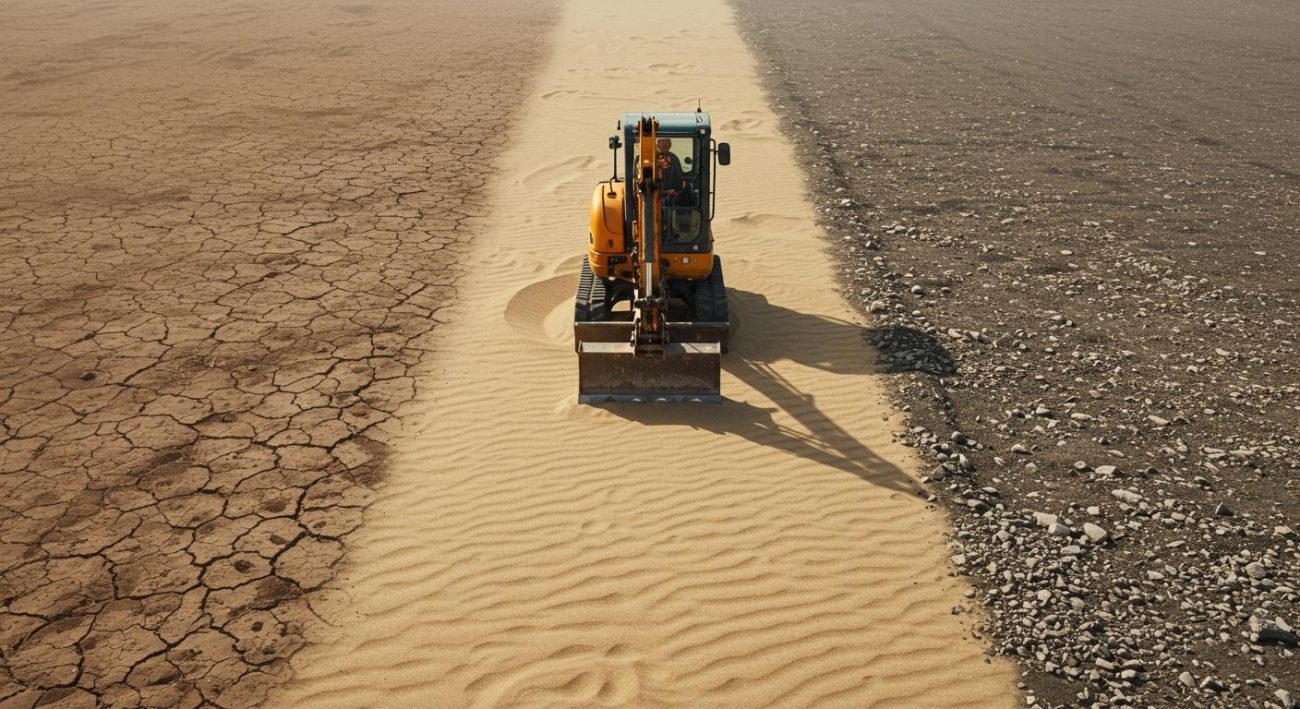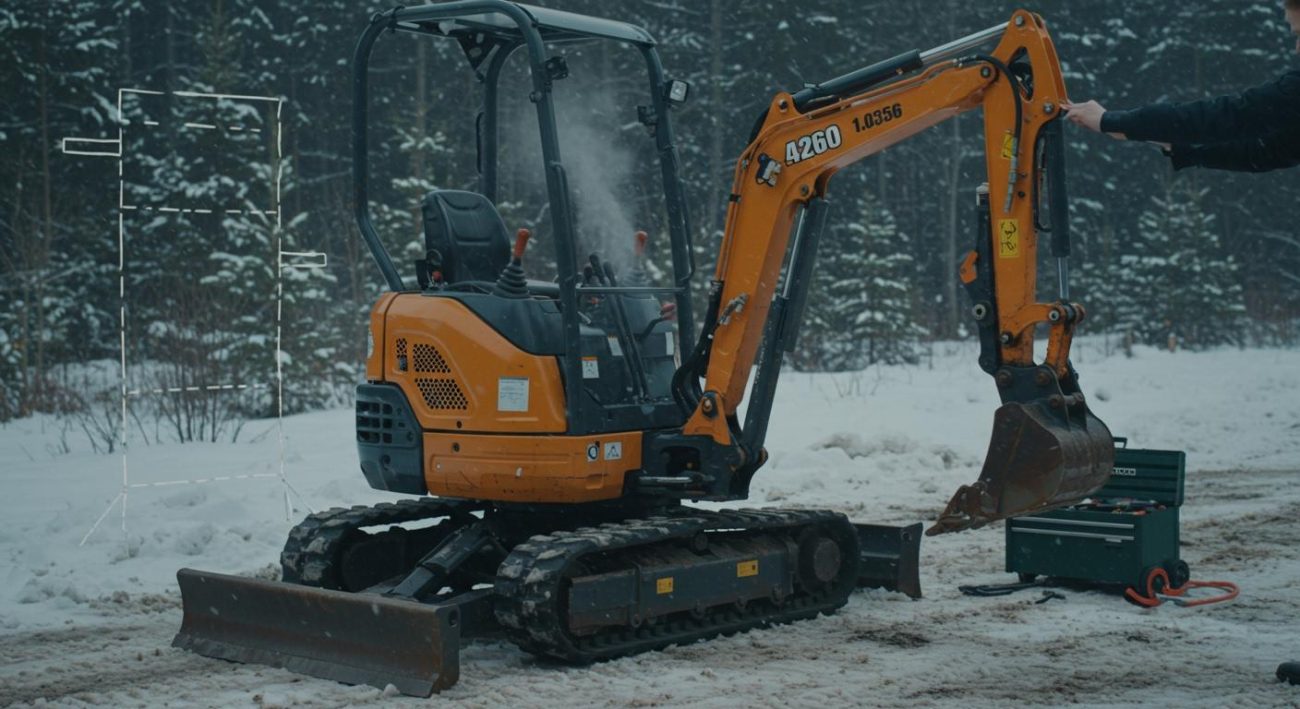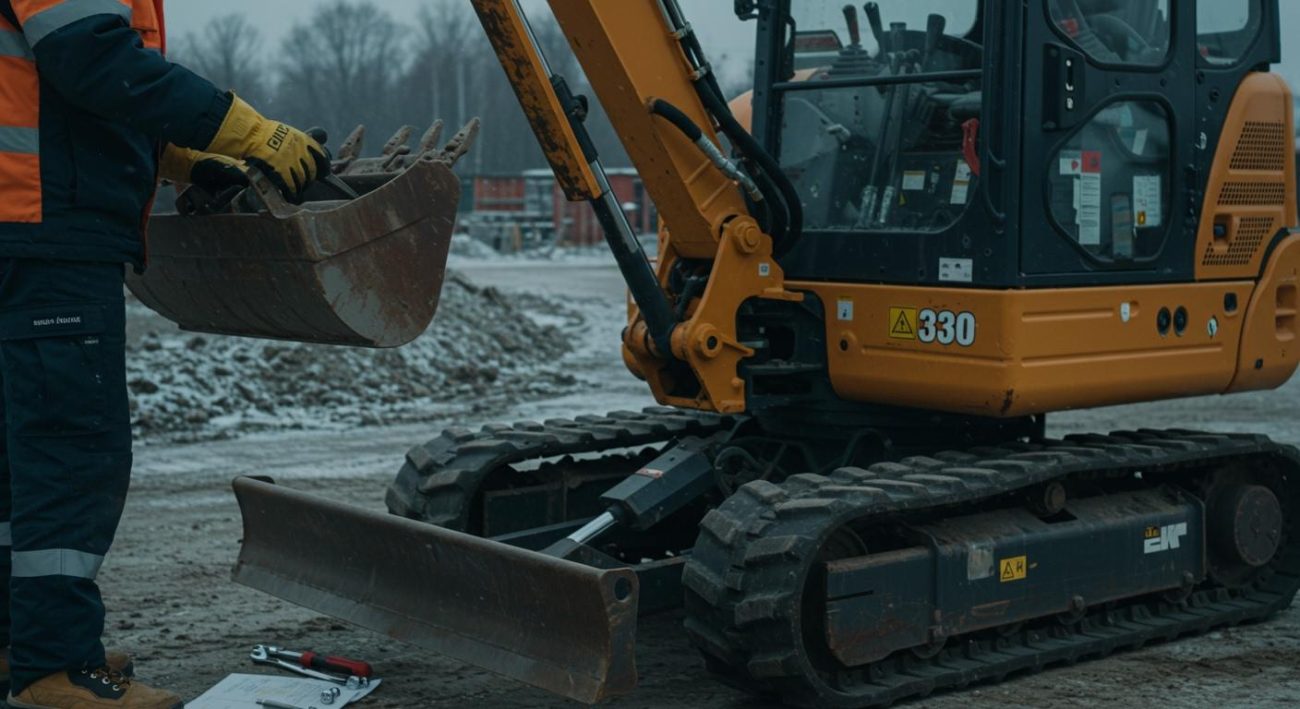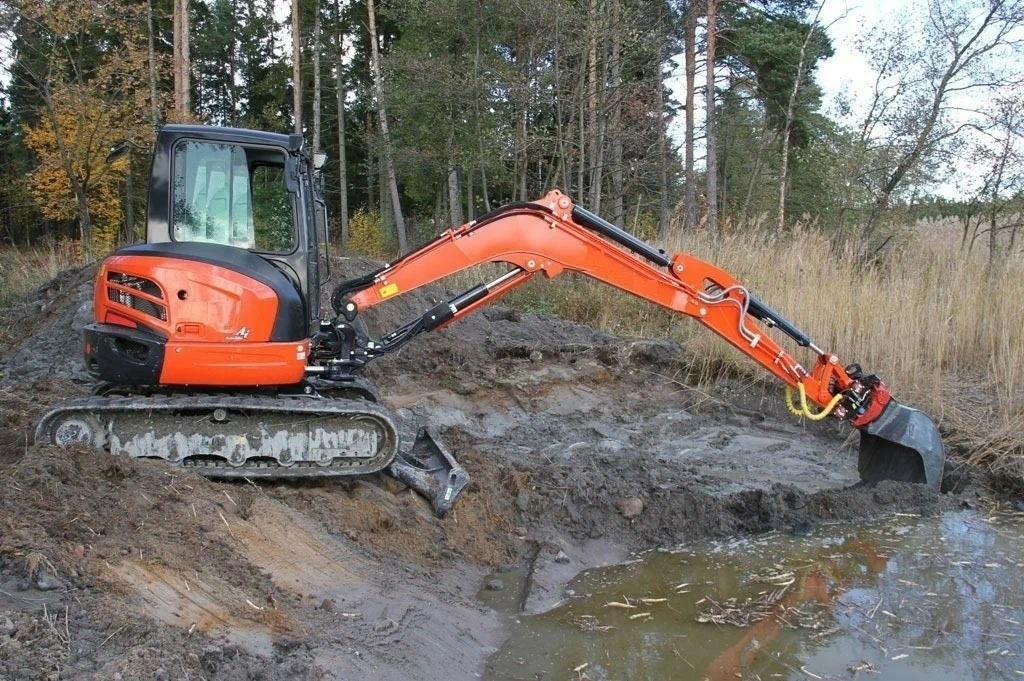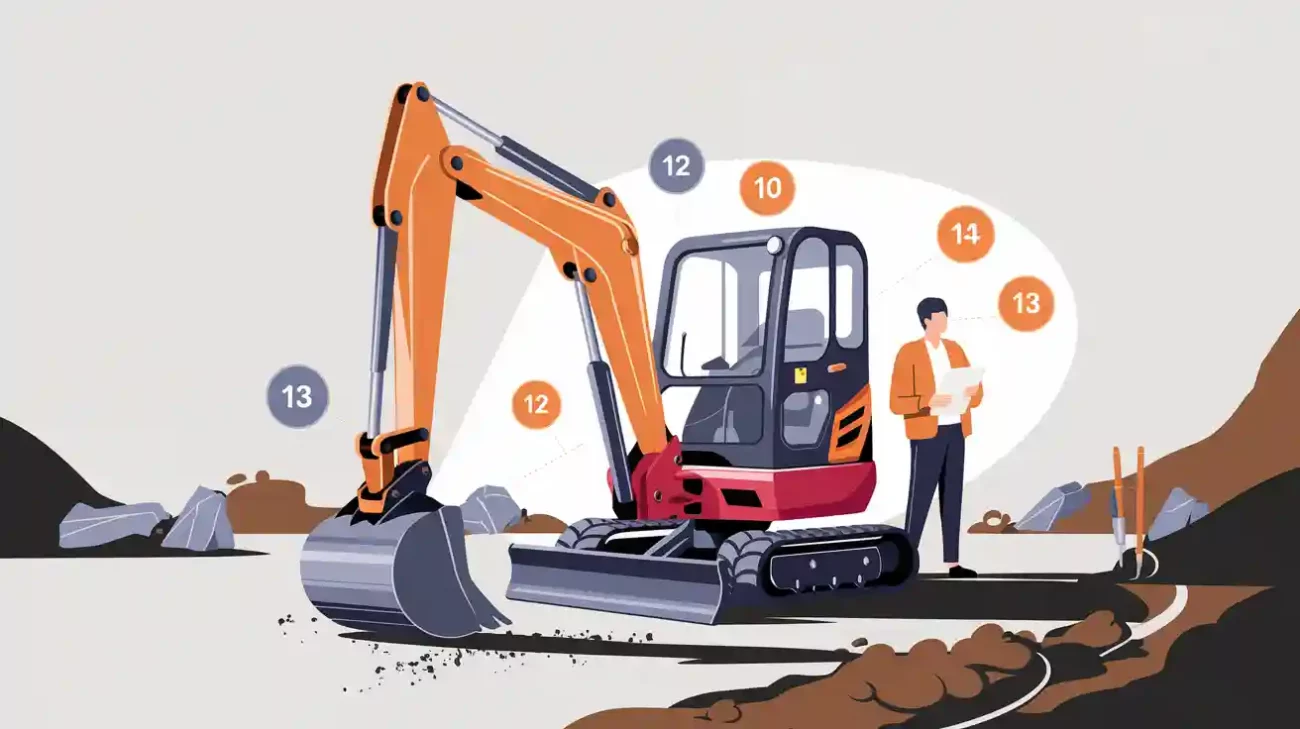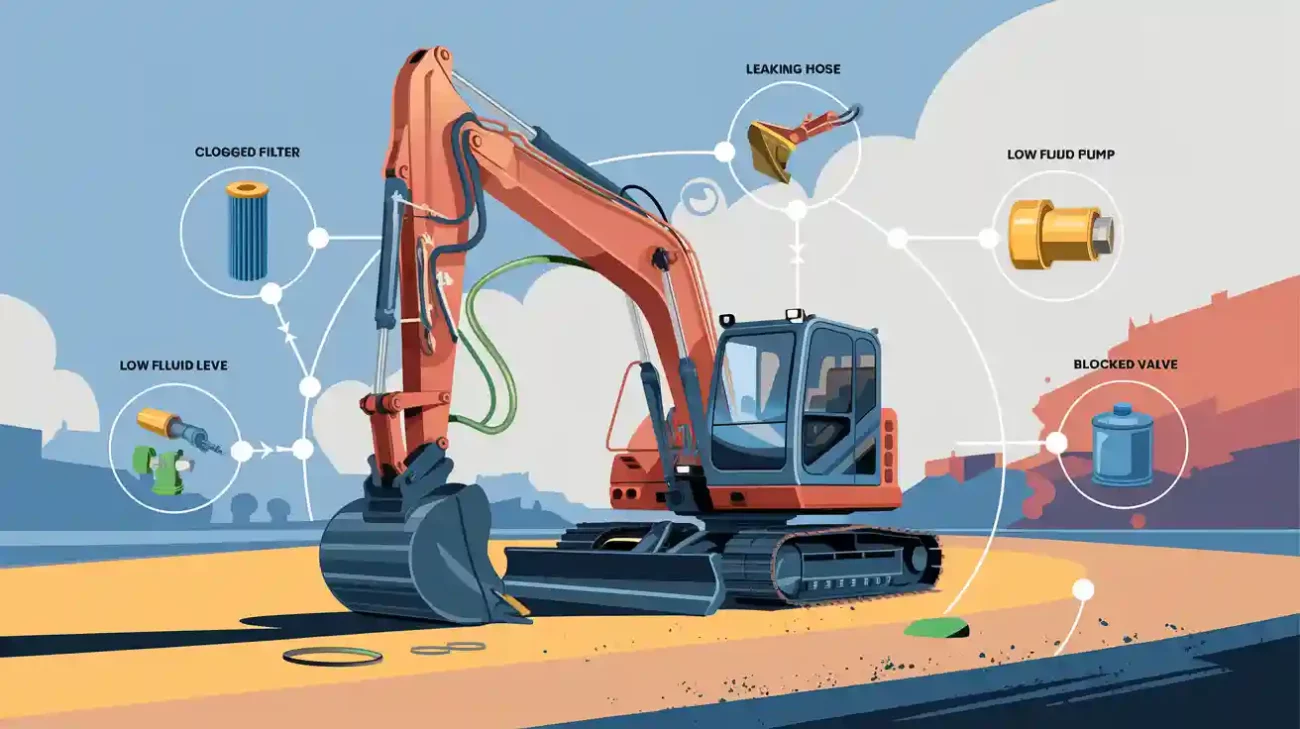Are you worried about costly cracks in your Mini Excavator Rubber Tracks this winter? You see damage, and you know repairs can add up fast. Don’t stress. You can tackle this problem with smart steps and clear advice. Let’s make sure your tracks stay tough all season long.
Key Takeaways
Cold weather makes rubber tracks stiff and brittle. Check your tracks daily when temperatures drop below 32°F to catch early signs of damage.
Proper tension is crucial for track longevity. Adjust track tension according to the OEM manual to prevent cracking and slipping.
Regular cleaning after use removes harmful salt and debris. Clean your tracks to protect them from wear and extend their life.
Why Mini Excavator Rubber Tracks Crack
Cold Weather Effects
You know how cold weather can make everything feel stiff and brittle. The same thing happens to your mini excavator rubber tracks. When temperatures drop below freezing, the rubber loses its softness. It starts to harden, which means it can’t bend and flex like it should. If you run your machine over snow or ice, the tracks can crack more easily because they’re not as flexible.
Tip: If you notice your tracks getting stiff when the temperature drops below 32°F, you’re seeing the first sign of trouble. Tracks that stay flexible last longer and handle rough winter conditions better.
Here’s what field studies show about rubber track performance in different temperatures:
Above 45°F, tracks stay soft and flexible.
Between 32°F and 45°F, tracks begin to stiffen and lose grip.
Below 32°F, winter tires work better than regular ones because they keep their flexibility and traction.
Below 20°F, regular tracks get very hard, which can lead to dangerous cracks and damage.
Loss of Flexibility
Rubber tracks need to flex and move with your mini excavator. In winter, the cold air makes the rubber stiff. When you drive over rough ground, the tracks can’t stretch or bend. This leads to cracks, splits, and deep cuts. You might see wear on the lugs or even exposed steel if the damage gets worse.
Deep cracks or cuts mean the track is wearing out.
If you see cracks on the belt or lugs, it’s time to check your tracks more often.
DeepKron knows how important track durability is for your machine’s life. The company designs tracks to handle tough conditions, but even the best tracks need care in winter. If you store your mini excavator in a safe place and follow DeepKron’s maintenance tips, you can avoid most problems.
Note: Cosmetic cracks might look bad, but they don’t always mean your tracks are unusable. Keep an eye out for deep splits or exposed steel—those are signs you need to act fast.
Winter brings snow, ice, and freezing temperatures. These conditions test your rubber tracks every day. If you want to keep your mini excavator running smoothly, pay attention to how your tracks feel and look. Regular checks and smart storage can help you get the most life out of your tracks.
Main Causes in Winter

Low Temperatures
Cold air makes mini excavator rubber tracks stiff and brittle. When you work in winter, the rubber loses flexibility. You might notice cracking if you drive over snow or ice. The tracks can break or split, especially when you turn sharply. To keep your tracks safe, avoid spinning and sudden moves. A good maintenance schedule helps you spot problems early.
Stiff tracks do not bend well, which leads to wear and cracking.
You need maximum traction to work safely in snow and ice.
Tip: Always check your tracks before starting work in winter. A quick inspection can save you time and money.
Improper Tension
Proper tension keeps your rubber tracks working longer. If the tracks are too tight, they stretch and crack. If they are too loose, they slip and wear out fast. Follow the OEM manual for the right tension. DeepKron recommends checking tension as part of your daily maintenance schedule.
Avoid too much tension.
Loose tracks can cause damage and reduce life.
Regular inspection helps you catch problems early.
Chemical and Salt Exposure
Winter brings snow and ice, but also salt and chemicals. These can eat away at the rubber tracks. Salt can corrode the metal inside the tracks, causing separation and damage. Oil and chemicals from the job site also weaken the rubber. Clean your tracks after each use to prevent wear.
Salt and chemicals cause cracking and damage.
Cleaning after use protects your tracks.
Poor Storage
Storing your mini excavator outside in winter can shorten track life. Snow, ice, and cold air make the rubber hard and brittle. DeepKron suggests keeping your machine indoors or under cover. A dry, sheltered spot protects the tracks from harsh weather.
Covered areas keep snow and ice off the tracks.
Good storage means longer life for your rubber tracks.
Note: Smart storage and regular inspection help you avoid costly repairs.
Prevention Tips for Rubber Tracks
Regular Inspections
You want your mini excavator rubber tracks to last through tough winter conditions. Start with daily inspection. Look for cracks, cuts, or signs of wear. Check the lugs and belt for damage after working in snow or ice. If you spot anything unusual, act fast. Regular inspection helps you catch problems before they get worse.
Check the undercarriage for wear on rollers, idlers, and sprockets.
Look for cracking or deep splits in the rubber tracks.
Make sure the tracks are free from ice and snow buildup.
Tip: Set a maintenance schedule that includes daily and weekly checks. This habit can extend rubber track life and keep your machine running smoothly.
Cleaning After Use
Snow and ice can hide salt, gravel, and debris. These things cause damage and wear if you leave them on your tracks. Clean your rubber tracks regularly, especially after working in winter. Use a stiff brush to remove dirt and buildup. Wash the tracks with water to get rid of salt and chemicals.
Clean the tracks after each use to prevent cracking.
Remove gravel and debris to keep traction strong.
Wash away salt to protect the metal inside the tracks.
Note: Cleaning after every job helps you avoid costly repairs and keeps your mini excavator ready for the next task.
Adjusting Track Tension
Proper tension is key for track maintenance. If your tracks are too tight, they can crack. If they are too loose, they slip and wear out fast. Check track tension every day in winter. Use the track adjuster behind the front idler to make changes. Adjust tension by pumping or draining grease through the valve. Small changes in sag can make a big difference.
Always check tension before starting work, especially in cold weather.
Adjust tension based on jobsite conditions.
Never operate with frozen tracks. Wait for the weather to improve.
Tip: Follow the OEM manual for proper tension. This step helps you get maximum traction and extend rubber track life.
Safe Operation in Winter
You can protect your rubber tracks by changing how you operate your mini excavator in winter. Warm up the machine before you start. This keeps the hydraulic oil flowing and prevents damage. Avoid sharp turns, especially on rocky or bumpy ground. Sharp turns can cause cracking and shorten track life.
Avoid making sharp turns on snow and ice.
Flush the tracks after operation to remove sediment and prevent hardening.
Reminder: Safe operation and smart habits help you get the most out of your tracks, even in tough winter conditions.
Storage in Winter Conditions

Avoid Sunlight
You want your mini excavator rubber tracks to last through the cold months. One smart way to do this is to avoid keeping rubber tracks in direct sunlight. Sunlight can damage rubber, even during winter. When you store tracks properly, you protect them from premature wear. Direct sunlight causes the rubber to dry out and crack. Ozone cracking can also happen if you leave your tracks exposed. This type of damage shortens the lifespan of your tracks. You should avoid direct sunlight by parking your machine in a shaded spot or inside a building.
Sunlight makes rubber brittle and weak.
Ozone cracking can appear when tracks sit in the sun.
Store tracks properly by choosing indoor or shaded areas.
Tip: If you must park outside, try to cover your tracks with a tarp or use a portable shelter.
Proper Shelter
Winter conditions bring snow and ice, which can harm your mini excavator. You need to keep your machine in a dry, protected shelter. Storing your excavator inside keeps moisture away from the tracks and other parts. If you cannot use a garage, a sturdy shed or a heavy-duty tarp works well. Make sure you cover the exhaust pipe opening to keep out snow and cold air. DeepKron recommends using a shelter that blocks wind and moisture. This helps your tracks stay flexible and strong.
Store the mini excavator inside when possible.
Use a dry shelter to prevent damage from snow and ice.
Cover your machine to keep out cold air and moisture.
Reminder: Good storage habits help you get the most life from your rubber tracks, even in tough winter conditions.
Troubleshooting Cracks
Assessing Damage
When you spot cracks on your mini excavator’s rubber tracks, you need to figure out how bad the damage is. Start with a track inspection. Look for signs of damage like dry rot or places where the rubber looks dried out and brittle. Wash off dirt and debris so you can see the cracks clearly. If you notice the rubber is hard or faded from sunlight, that’s a warning. You can use UV protectants to help slow down more damage.
Tip: Regular cleaning after working in snow or ice helps you catch problems early and keeps your tracks in good shape.
Steps for checking cracks:
Check for brittle or dried-out rubber.
Clean tracks to see cracks better.
Use UV protectant if tracks sit outside.
Temporary Fixes
If you find small cracks, you can try some quick fixes to keep your machine running. Use a rubber repair kit for minor splits. Make sure you keep the tracks clean and dry, especially after working in winter. Avoid putting excessive stress on damaged areas. If you notice de-tracking or slipping, stop and check the tension. Keeping proper tension helps you get maximum traction and prevents more wear.
Reminder: Temporary fixes work for small cracks, but deep splits need more attention.
When to Replace
Sometimes, you need to replace your tracks instead of fixing them. If you see cracks reaching the steel cords inside, or if the tracks show visible wear and can’t hold up under pressure, it’s time for new ones. Significant deterioration means your tracks can’t give you the life or traction you need. DeepKron support can help you choose the right replacement and keep your mini excavator working safely.
Cracks reaching steel cords
Major damage affecting track integrity
Note: Replacing worn tracks before they fail keeps your machine safe and ready for tough winter jobs.
You can keep your mini excavator running strong all winter with a few smart habits.
Store your machine in a cool, dry place.
Inspect for cracks and cuts before they get worse.
Regular care means better traction, less damage, and longer track life. Trust DeepKron’s advice for reliable results.
FAQ
Why do my rubber tracks crack faster in cold weather?
Cold air makes rubber stiff. When you drive your mini excavator, the tracks can’t bend well. Cracks show up faster in freezing temperatures.
Tip: Warm up your machine before use to help the tracks stay flexible.
How often should I check my tracks during winter?
You should inspect your tracks every day before you start working. Look for cracks, cuts, or anything unusual. Daily checks help you catch problems early.
Check Type | How Often |
|---|---|
Visual | Daily |
Tension | Daily |
Cleaning | After use |
Can I fix small cracks myself?
Yes, you can use a rubber repair kit for minor cracks. Keep the tracks clean and dry. If cracks get deep, you should contact DeepKron for support.




